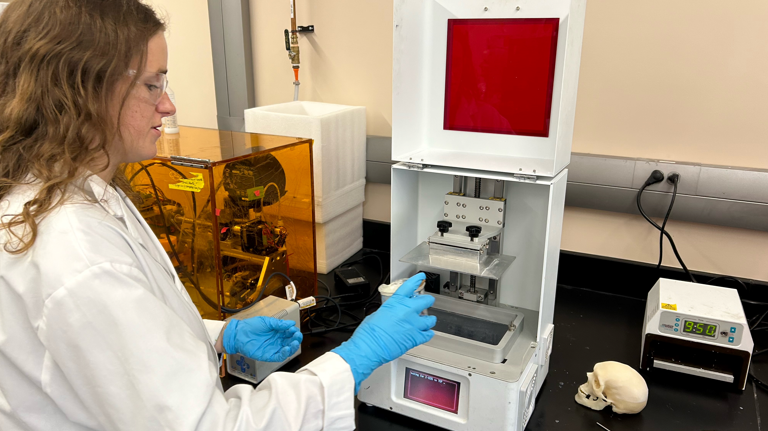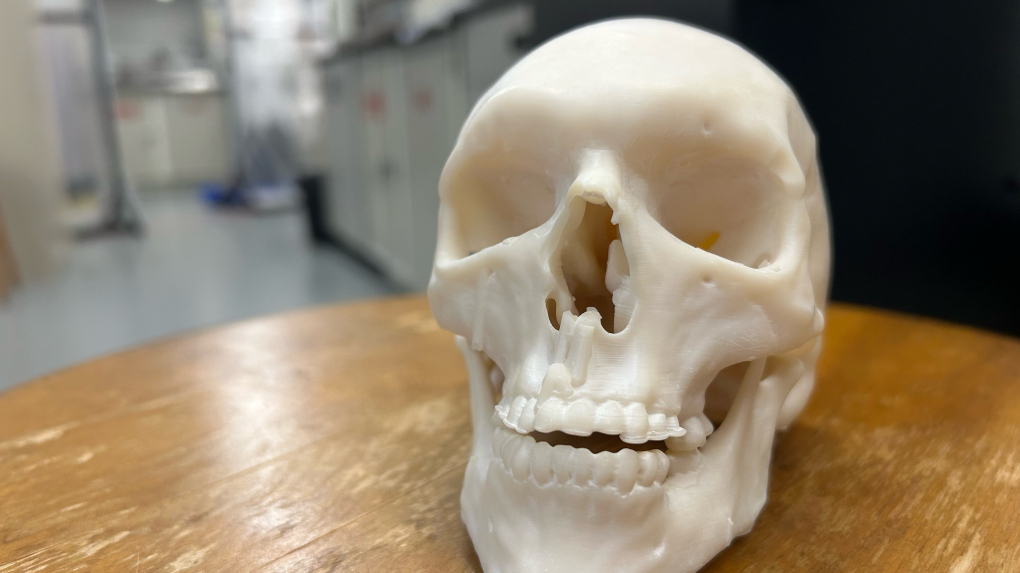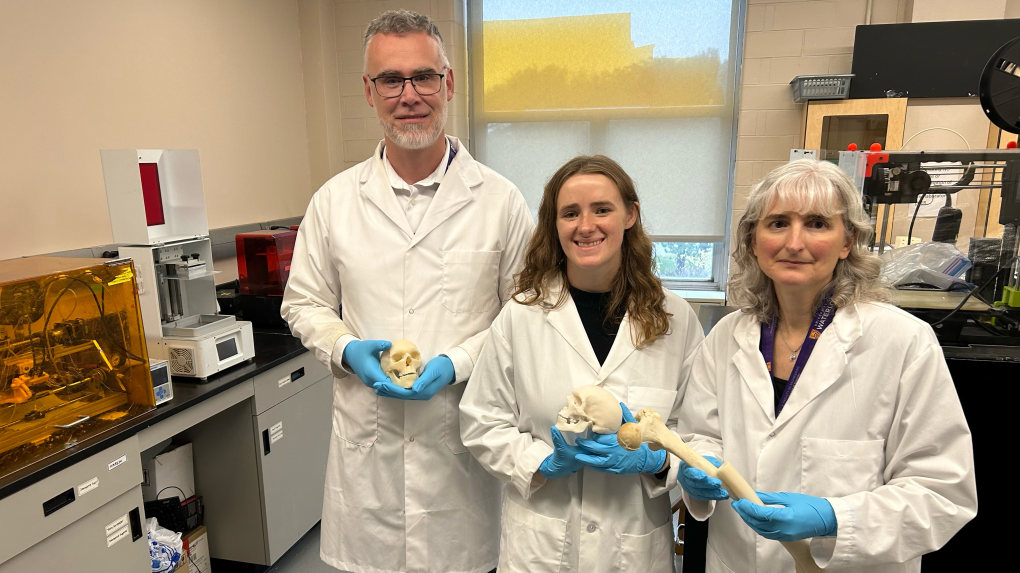Synthetic bone that essentially dissolves as real bone grows.
It’s an idea that could dramatically improve the quality of life for cancer and trauma patients, and thanks to a team at the University of Waterloo, it could soon be a reality.
Thomas Willett, an associate professor of biomedical engineering at UW, got the idea while working at Mount Sinai Hospital in Toronto.
“I worked with orthopedic surgeons there, and I became exposed to this problem of large defects that don’t heal by themselves,” he said.
A simple bone break can mend itself, but for bone cancer or trauma patients who are in need of an entire new bone or bone graft, it’s more complicated.
Which is why Willett and his team have developed a very specific substance that can be 3D-printed to meet specific needs.
“One advantage is that our material doesn’t contain any cellular material, so we’re not going to have a rejection, like you would have with an organ,” Willet explained.
 Elizabeth Diederichs pouring the raw material into the 3D printer at the University of Waterloo. (Krista Sharpe/CTV News)
Elizabeth Diederichs pouring the raw material into the 3D printer at the University of Waterloo. (Krista Sharpe/CTV News)
His colleague on the project, another professor of biomedical engineering at the University of Waterloo, said that also means fewer surgeries.
“It’s going to likely help improve quality in life and also reduce health care costs,” said Maud Gorbet. “If you think, in the long run, how much it costs.”
The substance has the consistency of pancake batter.
 A 3D-printed skull, made with synthetic materials, at the University of Waterloo. (Krista Sharpe/CTV News)
A 3D-printed skull, made with synthetic materials, at the University of Waterloo. (Krista Sharpe/CTV News)
Elizabeth Diederichs is a graduate student and working on project as part of her PhD.
“We are working with a biopolymer, nanocomposite. So it’s basically polymers from sources such as soybean oil, and then hydroxyapatite, which is the mineral, that’s actually in your bones currently,” she said.
Once placed in a person, the idea is that the 3D printed bone would eventually dissolve as the body grows natural bone to replace it.
It’s taken about half a decade to develop the version of the material they now use which, in some cases, may need to be strong enough to withstand the weight of the human body.
 Thomas Willett, Elizabeth Diederichs and Maud Gorbet hold bones and skulls that have been 3D printed with synthetic materials. (Krista Sharpe/CTV News)
Thomas Willett, Elizabeth Diederichs and Maud Gorbet hold bones and skulls that have been 3D printed with synthetic materials. (Krista Sharpe/CTV News)
For now, the team is only printing small versions of bones and skulls, to test the substance.
The plan, though, is to scale up the project.
“This technology is fairly new, so as its building, we’re getting more and more capabilities of what we can do with it,” Diederichs added.
Willett said it will likely take at least a decade and millions of dollars before the substance is ready for hospitals.
But, for now, the team is working towards clinical trials and securing more funding.







